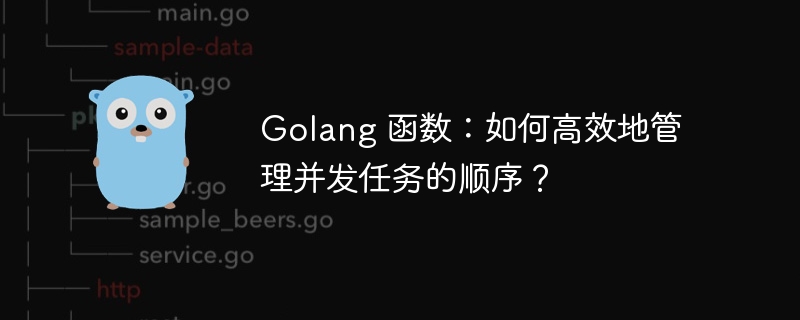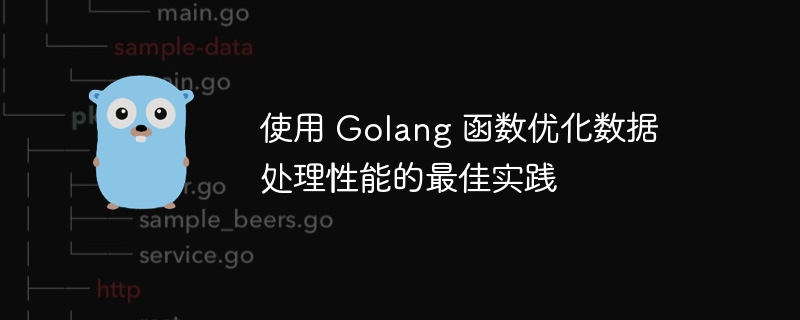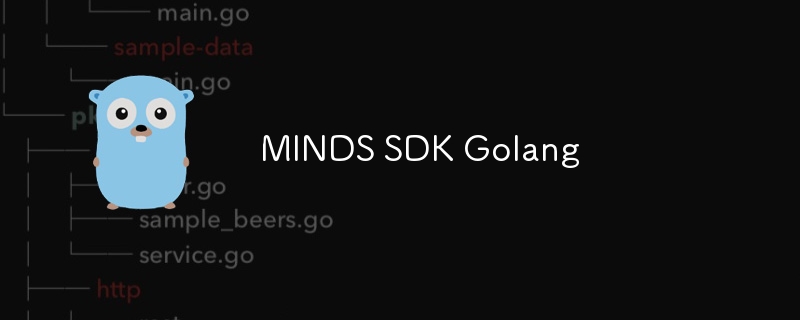go 中使用上下文可控制 goroutine 生命周期:创建上下文: 使用 context.background() 或嵌套现有上下文。取消上下文: 调用 context.cancelfunc,将上下文标记为已取消。在 goroutine 中使用上下文: 在函数签名中添加 context.context 参数,上下文取消后 goroutine 将退出。实战案例: 使用带有超时的上下文控制 goroutine 在一定时间后退出或取消。

Go 函数:用上下文取消控制 goroutine 的生命周期
在 Go 中,上下文是一种规范化机制,用于向函数传递终止信号。通过使用上下文,我们可以优雅地取消正在运行的 goroutine,避免资源泄漏和潜在的死锁。
创建上下文
要创建上下文,可以使用 context.Background() 函数或嵌套现有上下文。context.Background() 创建一个代表根上下文的空上下文。要嵌套上下文,可以使用 context.WithValue() 函数将新值添加到现有上下文中。
// 创建根上下文 rootCtx := context.Background() // 创建带有值的嵌套上下文 valueCtx := context.WithValue(rootCtx, "key", "value")
取消上下文
要取消上下文,可以使用 context.CancelFunc 返回的函数。当调用该函数时,上下文将被标记为已取消。
立即学习“go语言免费学习笔记(深入)”;
// 创建带有取消函数的上下文 ctx, cancel := context.WithCancel(rootCtx) // ... // 取消上下文 cancel()
在 goroutine 中使用上下文
要在 goroutine 中使用上下文,可以在函数签名中添加一个 context.Context 参数。如果上下文被取消,goroutine 将优雅地退出。
func myRoutine(ctx context.Context) {
for {
select {
case <-ctx.Done():
// 上下文已取消,goroutine 退出
return
default:
// 执行 goroutine 逻辑
}
}
}实战案例
以下是一个使用上下文取消控制 goroutine 生命周期的实战案例:
package main
import (
"context"
"fmt"
"time"
)
func main() {
// 创建带有超时(5 秒)的上下文
ctx, cancel := context.WithTimeout(context.Background(), 5*time.Second)
// 启动 goroutine,传入上下文
go func(ctx context.Context) {
for {
select {
case <-ctx.Done():
// 上下文已取消或超时,goroutine 退出
fmt.Println("Goroutine cancelled or timed out")
return
default:
// 执行 goroutine 逻辑
fmt.Println("Working...")
time.Sleep(1 * time.Second)
}
}
}(ctx)
// 在 3 秒后取消上下文
time.Sleep(3 * time.Second)
cancel()
// 等待 goroutine 退出
time.Sleep(1 * time.Second)
}在这个案例中,goroutine 将在 5 秒后超时,或者当上下文被取消时退出。
以上就是Golang 函数:用上下文取消控制 goroutine 的生命周期的详细内容,更多请关注php中文网其它相关文章!





